What Does Yerba Mate Taste Like? A Woodland Journey in a Cup
Yerba mate, a traditional South American beverage, has intrigued people worldwide with its unique cultural significance and potential health benefits.
Serious tea enthusiasts and curious newcomers often wonder about its flavor profile and sensory experience.
This stimulating drink carries a rich history deeply rooted in Argentine, Uruguayan, and Paraguayan traditions.
Most people find yerba mate's initial taste quite surprising and different from typical beverages they consume daily.
Its complex flavor characteristics can vary depending on multiple factors like preparation method, region of origin, and personal brewing technique.
Some describe yerba mate as an acquired taste that transforms with each brewing experience.
Understanding its nuanced taste requires an open mind and willingness to appreciate its distinctive qualities.
Let's dive into the world of yerba mate and uncover what makes this beverage so captivating.
What Is Yerba Mate?
Yerba mate comes from South American lands where people in Argentina, Paraguay, Uruguay, and Southern Brazil love this special drink.
Locals choose this herb over coffee by a wide margin.
People make a caffeinated drink from this unique plant.
Yerba mate looks like tea but doesn't contain actual tea leaves.
Some people find yerba mate has a strong bitter taste.
Drinkers who want more flavor could select stronger varieties or more intense extracts.
Pure yerba mate comes from leaves of Ilex paraguariensis trees, and these leaves work perfectly for brewing a tasty drink.
Water for brewing should stay below boiling temperature for best results.
How Yerba Mate Tastes
Yerba mate carries a bold earthy taste mixed with grassy and slightly bitter notes.
Hints of eucalyptus waft through its aroma, which might seem strange to newcomers.
Seasoned drinkers often say people need time to appreciate its unique flavor.
First sips can catch people off guard, as the taste differs from green tea expectations.
Over time, most individuals develop a deep appreciation for this distinctive drink.
Water temperature matters when brewing yerba mate.
Boiling water creates an overly harsh taste, so choose water that's hot but not bubbling.
Preparing mate in a traditional gourd and sipping through a special straw helps enhance its rich flavor profile.
Yerba Mate Texture Description
Texture plays a key role in mate enjoyment.
Feeling mate in your mouth goes beyond flavor, focusing on how it feels with its liquid qualities.
Different brands have unique sensations.
Some mates feel light and watery, while others have a heavier presence.
Brands can feel chalky, sandy, or smooth when you drink them.
Cigar experiences share similar texture traits.
Cigar smoke might drift softly across your mouth, leaving just a hint of presence.
Stronger cigars can blanket your entire mouth with a rich, smooth feeling that lingers.
Lighter mate versions might appeal more to some people.
Personal preferences matter when choosing between light and full-bodied options.
Deeper, richer mate experiences offer more complexity for careful drinkers.
How to Make and Drink Yerba Mate
Starting small helps prevent overwhelming yourself.
Sipping tiny amounts and avoiding hot versions works best.
Strong flavors might feel intense for some people, so keeping drinking temperatures mild is crucial.
Paying attention to these details helps you enjoy yerba mate's unique taste.
Making yerba mate requires a gourd and filter.
Tea balls work well for filtering leaves before drinking.
Sweese tea mugs offer large metal filters that block big leaf pieces.
Users can create drink blends by changing leaf quantities and experimenting with different herb combinations.
Maximizing yerba mate flavor depends on using good tea ball filters.
These filters help extract maximum leaf essence.
Sweese tea mugs with metal filters provide excellent brewing support.
Placing leaves inside the filter and letting them soak creates a delicious drink experience.
Can Pregnant Women Drink Yerba Mate?
Yerba mate might raise concerns for pregnant or breastfeeding women because its caffeine levels could impact child growth.
Medical professionals point out that this tea includes more than just caffeine.
Substantial amounts of antioxidants also exist in yerba mate, which requires discussion with healthcare providers.
Small amounts of caffeine work safely during pregnancy.
Doctors typically recommend monitoring total caffeine intake from various sources throughout daily meals and drinks.
Tracking consumption helps ensure you stay within recommended limits while enjoying moderate quantities of beverages like yerba mate.
Does Yerba Mate Go Bad?
Yerba mate doesn't really go bad like other foods.
Storing it poorly can cause problems, like leaving it open where air dries out the leaves and kills the flavor or keeping it somewhere damp where mold might grow.
People should keep mate away from bright light and store it in paper bags or clean glass containers.
Mate can stay good for several years.
Look for leaves that are olive green with a dull surface.
Small twigs should appear light tan, and the whole container should smell like fresh hay and green veggies.
When you check the mate, sniff it carefully and take a small taste.
If something seems off about how it smells or tastes compared to what you know, it might be time to replace your stash.
Yerba Mate: Health Benefits and Risks
Yerba mate packs a powerful punch of antioxidants, beating green tea in its health benefits:

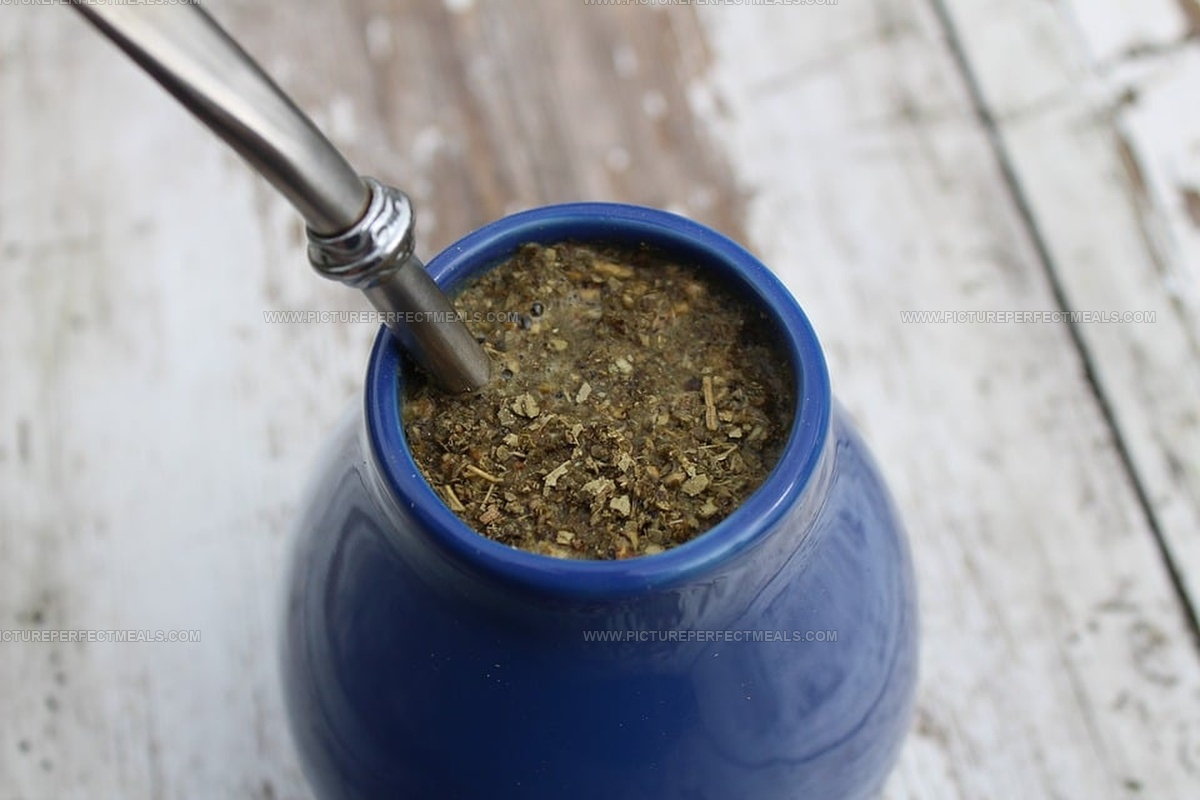
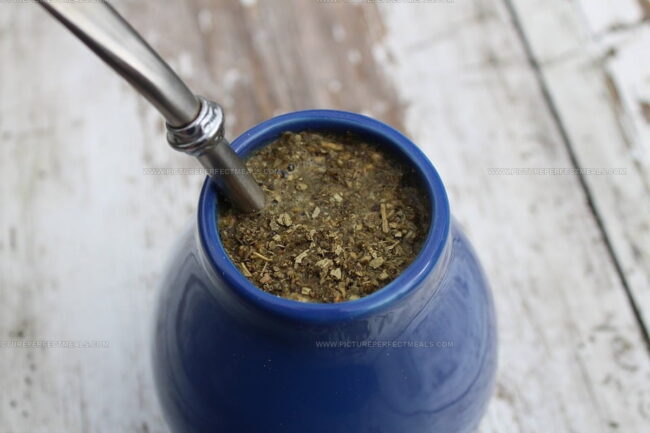
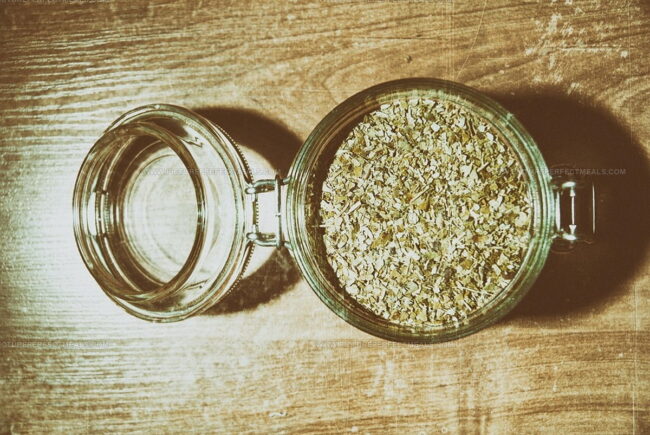
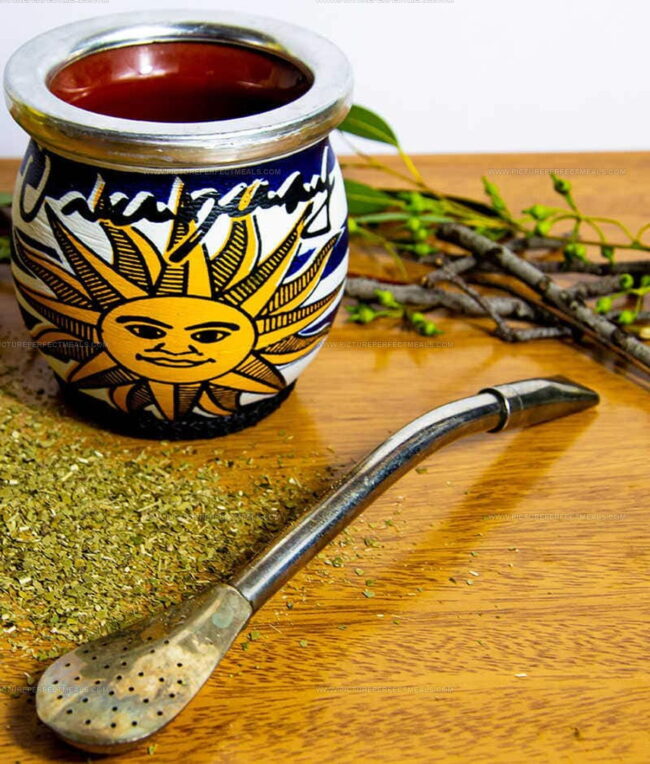
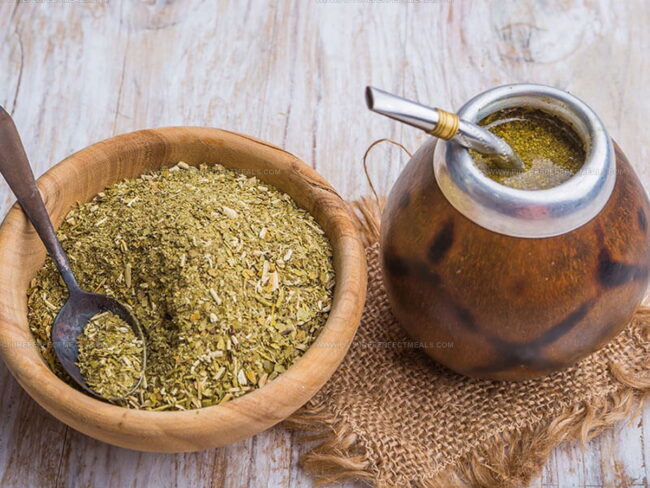
Jenna Hartley
Founder & Recipe Creator
Expertise
Education
Box Hill Institute, Melbourne
William Angliss Institute, Melbourne
Jenna is the heart of Picture Perfect Meals, turning simple ingredients into beautiful, easy‑to‑make dishes.
Growing up around family meals in Melbourne, she trained at Box Hill Institute and then perfected her pastry skills at William Angliss Institute. She loves mixing classic Australian flavors with fresh ideas to keep cooking fun and stress‑free.